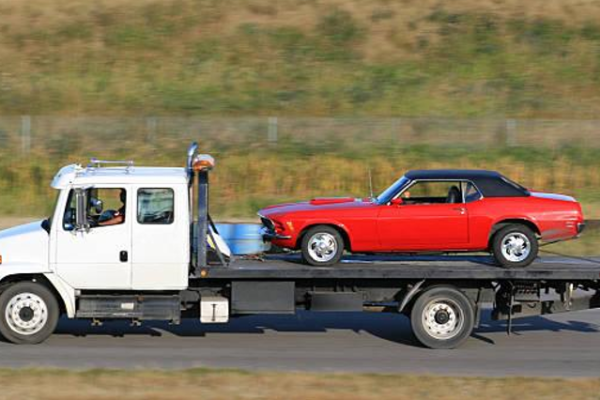Are you in the market for a new car and considering a parallel import? Parallel importing has gained popularity in recent years as an alternative way to get your hands on vehicles that might not be officially available in your country’s market. If you’re intrigued by the idea of exploring a broader range of vehicle models and configurations, you might want to check out options available through parallel importers like vinsautogroup.com.sg. This process bypasses the traditional distribution channels set up by manufacturers for a specific region. Instead of purchasing from an authorized local dealer, you work with an importer who sources the car internationally and brings it to your country. In this guide, we’ll walk you through the essentials of parallel import car buying, ensuring you’re well-equipped to make an informed decision.
Table of Contents
What is Parallel Importing?
At its core, parallel importing involves purchasing a vehicle directly from a foreign market where it might be more readily available or come with different features. This process bypasses the traditional distribution channels set up by manufacturers for a specific region. Instead of purchasing from an authorized local dealer, you work with an importer who sources the car internationally and brings it to your country.
The Pros of Parallel Import Car Buying
1. Wider Vehicle Selection
One of the biggest draws of parallel importing is the access to a broader range of vehicle models and configurations. Manufacturers often tailor their offerings to different markets based on consumer preferences and regulations. By parallel importing, you can potentially get a vehicle that’s not officially offered in your country, giving you a unique and personalized driving experience.
2. Potential Cost Savings
Parallel importing can sometimes offer cost savings compared to purchasing through authorized dealerships. Vehicles bought through official channels might come with additional expenses, including local dealer markups and distribution costs. Parallel importers often have more competitive pricing due to their direct sourcing approach.
3. Exclusive Features
Some markets receive vehicles with unique features not found in other regions. Parallel importing lets you tap into these exclusive options that might enhance your driving enjoyment or provide additional safety features.
4. Avoiding Long Waiting Periods
When a new model is released, it can take some time before it reaches your local dealerships. Parallel importing allows you to get your hands on the latest models sooner, without the need to wait for them to officially arrive in your country.
Key Considerations Before Parallel Importing
1. Research Importers Thoroughly
Not all parallel importers are created equal. Do your homework and research potential importers extensively. Look for reviews, ratings, and customer feedback. A reputable importer should be transparent about the sourcing process, warranty coverage, and after-sales services.
2. Understand Warranty Coverage
Warranty coverage can be a tricky aspect when parallel importing. Some imported vehicles might not come with a manufacturer’s warranty valid in your country. In such cases, the parallel importer might offer their own warranty. Make sure you understand the terms, duration, and coverage of the warranty before making a decision.
3. Check for Compliance and Regulations
Vehicles manufactured for one market might not meet the safety or emissions regulations of another. Before finalizing your purchase, confirm that the parallel imported car complies with your country’s regulations. Non-compliant vehicles might lead to legal issues and could even be unsafe to drive.
4. Evaluate Total Costs
While the initial price of a parallel imported vehicle could be attractive, consider the total cost of ownership. Factor in import duties, taxes, registration fees, and any modifications needed for the car to meet local regulations.
The Process of Parallel Importing
1. Selecting Your Vehicle
Begin by choosing the vehicle you want to import. Research its specifications, features, and reviews thoroughly. Ensure that the car aligns with your preferences and needs.
2. Finding a Reputable Importer
Look for importers with a track record of reliability. Seek recommendations from friends or online automotive communities. Contact the importer and inquire about their sourcing process, warranty, and customer support.
3. Understanding Costs
Request a comprehensive breakdown of costs. This should include the vehicle’s price, import duties, taxes, shipping fees, and any additional charges. Clarify whether the quoted price is all-inclusive or if there might be hidden fees.
4. Securing Financing (if needed)
If you’re financing the purchase, arrange for a loan or financing option. Some parallel importers might have partnerships with financial institutions to facilitate this process.
5. Placing Your Order
Once you’re satisfied with the terms and costs, place your order with the importer. They will initiate the process of sourcing the vehicle from the foreign market and arranging for its transportation.
6. Inspection and Modification (if needed)
Upon arrival, the vehicle might need to undergo inspection and modifications to meet local regulations. Work closely with the parallel importer to ensure these processes are carried out smoothly.
7. Registration and Documentation
Complete the necessary paperwork for registration. This could include customs clearance, emissions testing, and other local requirements. The parallel importer should guide you through this process.
8. Taking Delivery
Once all formalities are completed, you can finally take delivery of your parallel imported vehicle. Inspect it thoroughly to ensure it matches your order and is in good condition.
Potential Challenges and Risks
1. Lack of Manufacturer Support
Some parallel imported vehicles might not have manufacturer support in your country. This could make it challenging to find authorized service centers and obtain genuine replacement parts.
2. Resale Value Considerations
Parallel imported vehicles might not hold their value as well as officially distributed models from reputable brands. Consider the potential impact on resale value before making your decision.
3. Limited Availability of Parts
If your parallel imported vehicle requires replacement parts, you might face difficulties sourcing them, which could lead to longer repair times.
Conclusion
Parallel import car buying can offer a gateway to a diverse selection of vehicles and unique features that might not be readily available in your local market. However, it’s essential to navigate this path with caution and due diligence. Thorough research, understanding warranty coverage, compliance with regulations, and total cost evaluation are key steps to take before making a parallel import car purchase. By being informed and prepared, you can confidently drive your new parallel imported vehicle and enjoy a driving experience that stands out from the crowd.





